APOLEIPON 't Hart, 1983
Etymology : apoleipon Gr., missing link ; because the taxon is thought to be the hitherto unknown progenitor of Sedum sexangulare.
Distribution : Central Greece, from 300 - 2000 m. See Note below !
Description (by 't Hart & Bleij in IHSP 2003) :
Glabrous perennials, non-flowering shoots procumbent or trailing, branching and rooting, usually forming dense mats.
Leaves alternate, sessile, densely imbricate on the non-flowering shoots, oblong-ellipsoid, shortly spurred, terete, obtuse, 4 - 8 mm, glaucous-green, dead leaves persistent, reddish-brown.
Inflorescences : Flowering branches erect, 5 - 8 cm, inflorescences dense cymes with 2 or 3 cincinni, bracts 2 per flower, with 3 - 15 sessile or subsessile flowers.
FIowers 5-merous, sessile to subsessile, sepals broadly sessile, unequal, obtuse to rounded, to 3 mm, petals lanceolate to elliptic-ovate, acuminate, ± 5 mm, yellow, filaments yellow, anthers yellow, styles ca 1 mm, nectary scales spathulate to oblong-cuneate, emarginate, ripe follicles stellate-patent, dark brown with distinct, brown lips along the suture, seeds brown, reticulate-papillose.
Cytology : 2n = 44
This taxon has formerly been confused with S. sexangulare, but can easily be distinguished from the latter by its densely imbricate alternate glaucous leaves. It hybridizes with S. laconicum in nature (= S. x patrickii), and belongs to the comparium of Ser. Alpestria A. Berger ('t Hart 1991).
Note :
In Sedum Society Newsletter 148 & 149 Ray Stephenson discussed the ranges of stonecrop species in the Parnassos area (Greece). Regarding S. apoleipon he wrote (vol. 149, p. 36) : “'t Hart, when first describing Sedum apoleipon, only knew of 3 high alpine locations : Timfristos, Oeta and Parnassos (all situated N of the Gulf of Corinth in Stereá Elláda). Recent fieldwork clearly shows that the species is a relatively common lowland plant to the S of Parnassos. Further investigation around the lower environs of Timfristos and Oeta are needed to verify if S. apoleipon is just as common there.”
At 310 m asl :
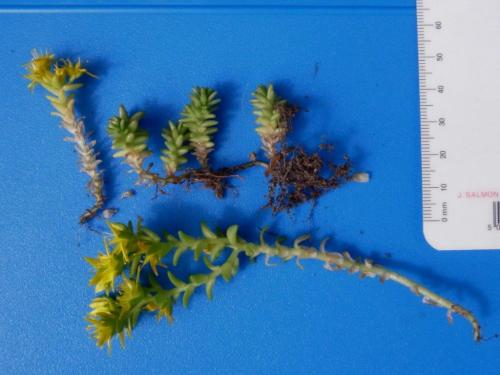
At 510 m asl :
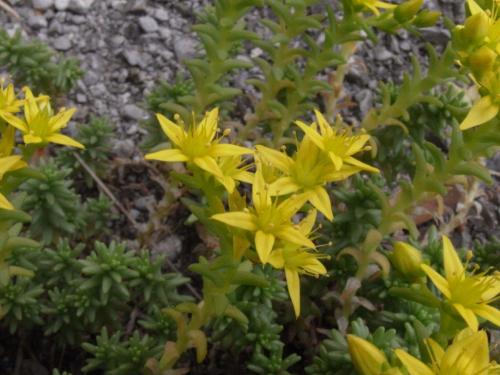
At 912 m asl :
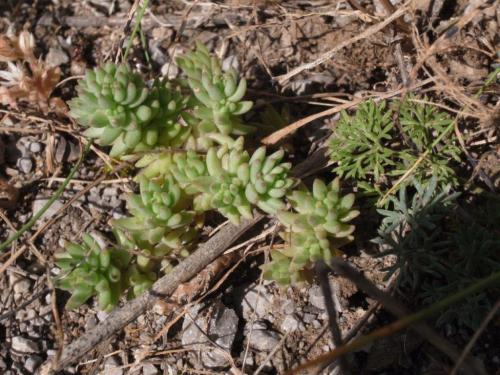
At 1745 m asl :
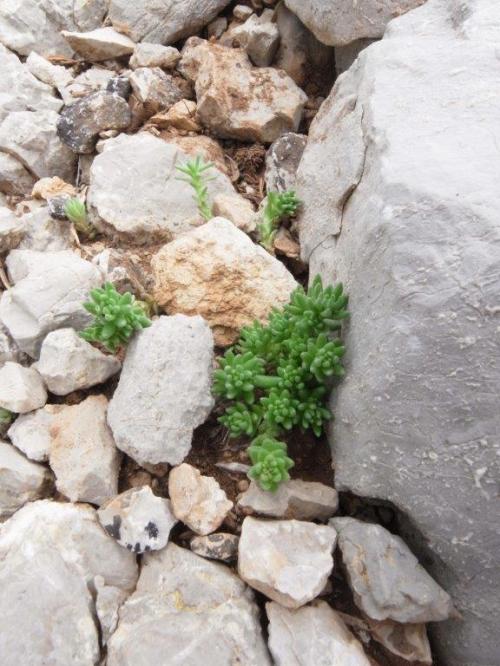
Plant in cultivation :
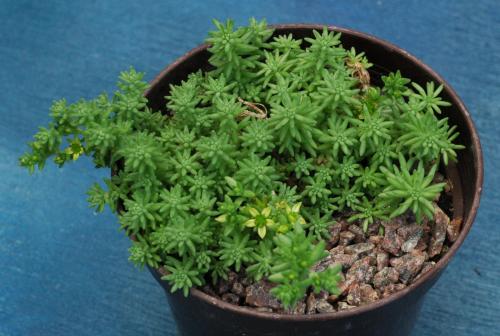
Photos Ray Stephenson